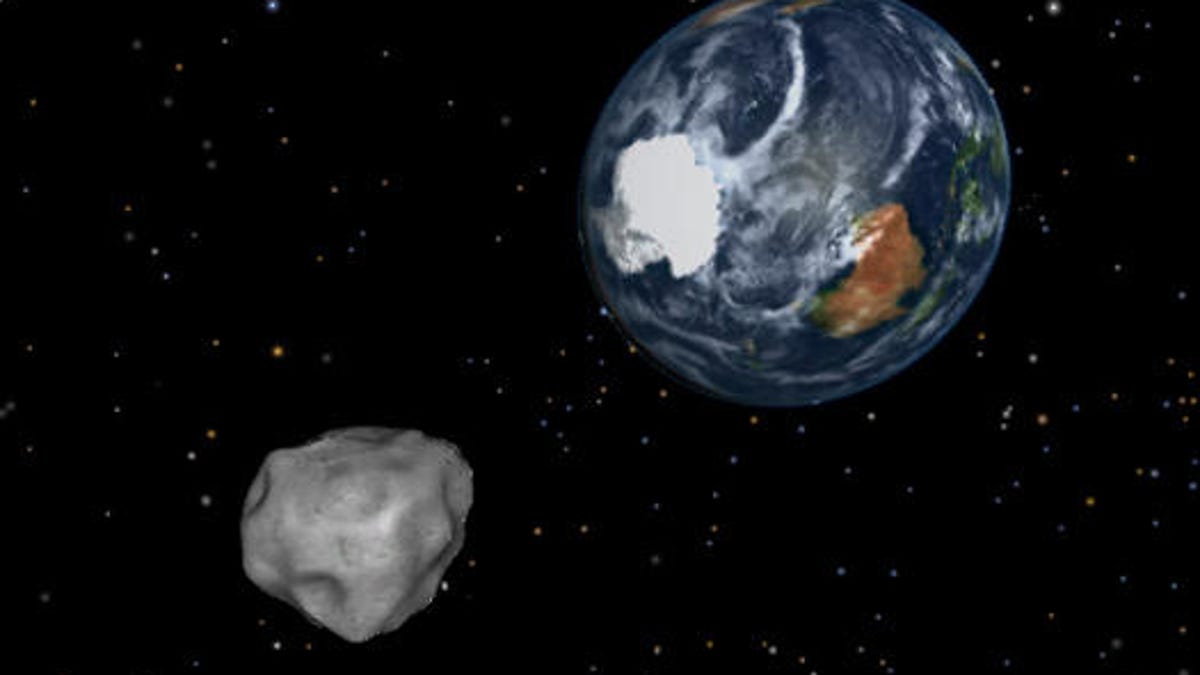Spooky Halloween asteroid flyby one of the closest near misses ever seen
A big space boulder scopes out the trick-or-treating situation here on Earth. Fortunately, it doesn't knock on any doors.

This NASA illustration depicts an asteroid during an approach.
Even space rocks are supplying jump scares on Halloween, just like your favorite horror flick.
A near-Earth asteroid identified as C0PPEV1 was spotted in the early morning hours Thursday by the Catalina Sky Survey, based in Arizona, and shortly thereafter by New Mexico's Magdalena Ridge Observatory and Arizona's Mt. Lemmon Steward Observatory. According to data from these early observations, the asteroid came closer to the surface of our planet (without actually colliding with our atmosphere) than any other close approach in NASA's database of known near-Earth objects.
Simulations show the asteroid passing above southern Africa within 3,852 miles (6,200 km) at the moment of closest approach, around 7:45 a.m. PT. To get an idea of how close this is, consider that many telecommunications satellites orbit at an altitude of 22,236 miles (35,786 km).
In about 45 minutes from now (now = 10/31/19 7:00 am PDT), newly-discovered #asteroid C0PPEV1 will pass only 6200 km above Earth's surface. 45 minutes ago it was passing through Earth's shadow.
— Tony Dunn (@tony873004) October 31, 2019
This is much closer than our geostationary satellites. https://t.co/q4qKuaUHjb pic.twitter.com/jsG2kaBY4O
Of course, some asteroids come closer and actually impact our planet, like the previously unseen bolide that exploded as it smacked into the atmosphere over Russia in 2013. A much smaller asteroid also collided with the atmosphere last year and burned up, leaving little bits of meteorites that're thought to have fallen over Africa.
Just like a Hollywood jump scare, though, this late October asteroid poses no actual threat. It has already passed by us at a speed of nearly 27,000 miles per hour (43,452 kph) and is likely only between 2 and 7 meters in diameter, which is too small to do major damage even if it had impacted.
What's really remarkable about this spooky space rock sighting is that it speaks to how astronomers are getting better at spotting incoming asteroids. It's very possible that we're getting buzzed by cosmic boulders on the regs, and always have been, but we're just now getting a sense of how much traffic is really up there.

